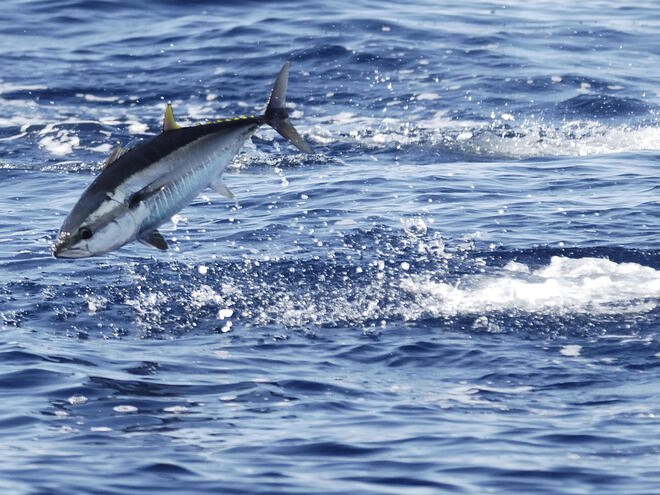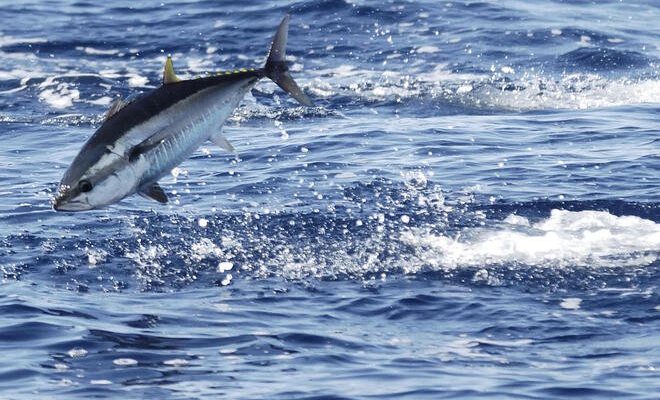
In this article, we’re going to dive deep into the common threats to tuna in the wild. We’ll explore what’s putting these remarkable fish at risk and why it matters. Whether you’re a seafood lover, an environmental enthusiast, or just curious about marine life, understanding these threats can help us appreciate and protect the world’s oceans.
Overfishing: A Major Concern
One of the biggest threats to tuna populations is overfishing. This happens when more fish are caught than can be replaced through natural reproduction. You might be wondering, “Why does this matter so much?” Well, tuna are vital for marine ecosystems and human economies alike. They play a crucial role in maintaining the balance of ocean life.
The demand for tuna is enormous. Sushi restaurants and canned tuna products have skyrocketed in popularity, leading to aggressive fishing practices. Large commercial fleets use advanced technology to locate schools of tuna, and this relentless pursuit can lead to significant declines in their numbers. Picture a bustling market—if everyone keeps taking tomatoes without letting them grow back, soon enough, there won’t be any left to enjoy.
Bycatch: The Costly Mistake
Another pressing issue is bycatch, which refers to the unintended capture of non-target species during fishing. When fishing boats set their nets for tuna, they often catch other marine animals, like dolphins, sea turtles, and even juvenile fish. It’s like trying to catch apples but ending up with a basket full of oranges and lemons instead.
This unintended catch can severely impact tuna populations. For instance, if juvenile tuna are caught, they can’t grow into adults and reproduce. This creates a cycle of decline that threatens the future of the species. Thankfully, many fishermen are beginning to recognize the problem and are seeking out more sustainable fishing practices. But there’s still a long way to go.
Climate Change: A Rising Tide of Trouble
Climate change is another issue at play. With rising ocean temperatures and changing currents, tuna are finding it harder to thrive in their habitats. These powerful fish prefer specific water conditions, and even a slight change can impact their migration patterns and breeding grounds. Think of it like moving from your favorite cozy house to one that’s too hot or too cold; it just doesn’t feel right.
Additionally, climate change affects the entire marine ecosystem. Coral reefs, which provide a home for many marine species, are suffering. As these vital habitats decline, so do the fish that rely on them for food and shelter, including tuna. Protecting our oceans from climate-related impacts is crucial for the future of all marine life.
Pollution: A Silent Invader
Pollution is another silent threat to tuna and other ocean creatures. Chemicals, plastics, and waste materials seep into the oceans, creating a hostile environment. For tuna, this pollution can lead to health issues and even affect reproduction. Imagine swimming in a pool filled with toxic waste—it’s hard to imagine being healthy and thriving in that environment.
Plastic waste is especially concerning. Millions of tons of plastic enter the ocean every year, and animals can mistake it for food. When tuna consume these plastics, it can cause serious harm to their digestive systems. Reducing pollution in our oceans is vital for the health of tuna and countless other marine species.
Habitat Loss: The Unseen Struggle
Habitat loss is a less obvious but still significant threat to tuna. Coastal development, pollution, and overfishing can destroy the habitats where tuna spawn and grow. You can think of it like tearing down a neighborhood where children play and grow up—they need safe spaces to thrive.
When crucial habitats are damaged, it disrupts the entire life cycle of tuna. Without safe places to lay eggs and nurture their young, tuna populations struggle to survive. Protecting marine habitats is essential for ensuring that tuna can continue to flourish in their natural environments.
Illegal Fishing: The Hidden Enemy
Lastly, illegal fishing exacerbates all these problems. Some fishermen operate outside of regulations, using harmful methods that further deplete fish stocks. It’s like playing a game without following the rules; it creates unfair advantages and leads to chaos.
Illegal fishing contributes to overfishing and bycatch and often disregards the importance of sustainable practices. Governments and organizations are working to combat illegal fishing, but it requires global cooperation to be effective.
What Can We Do to Help?
So, what can you do to help tuna in the wild? Here are a few simple actions you can take:
- Choose sustainably sourced seafood: Look for labels that indicate sustainable fishing practices.
- Reduce plastic use: Cut down on single-use plastics and advocate for cleaner oceans.
- Support ocean conservation: Get involved with or donate to organizations working to protect marine environments.
- Educate others: Share what you’ve learned about tuna and ocean conservation with friends and family.
By making small changes in our daily lives, we can collectively help protect tuna and ensure they continue to thrive in our oceans.
In summary, tuna face many threats in their wild habitat, from overfishing and bycatch to climate change and pollution. Understanding these challenges is the first step in helping protect these incredible fish. With awareness and action, we can work towards healthier oceans and a brighter future for tuna and all marine life.

